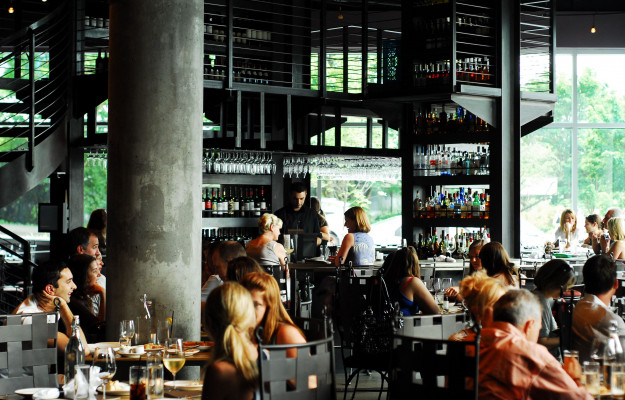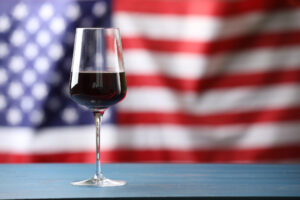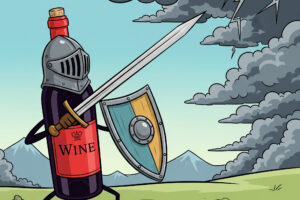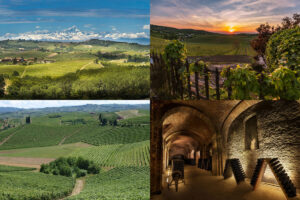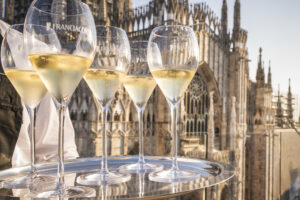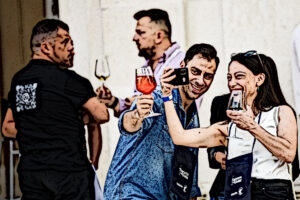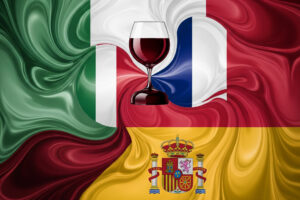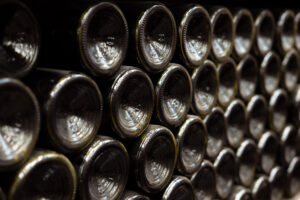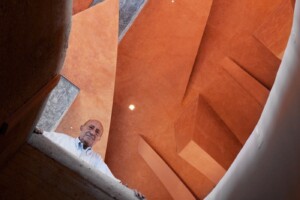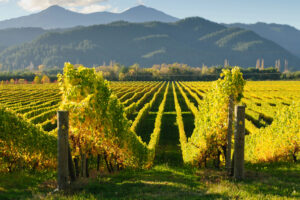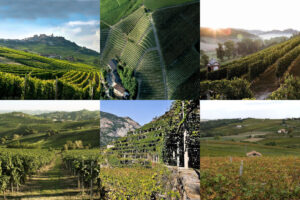After years of almost undisputed leadership on the US market, which accounts for over a quarter of Italian wine shipments, Italy is experiencing a period of fogging in these early months of 2019, growing at a much slower rate than its competitors, especially in France. There is no need to worry more than necessary, but the moment necessarily opens the door to some reflection on the “space” that occupies the Italian wine. First of all the geographical one, still limited to the most consolidated squares, such as New York, and then the one on the shelf, where the Belpaese is still linked to the central role of the most famous denominations and territories, with the smallest and emerging ones, which would have the capacity to break through, which are still struggling. From the stage in Seattle, in the State of Washington, which closes the U.S. Tour of Simply Italian Great Wines signed by IEM, we talked about it with Gioia Morena Gatti, head of Agrifood and Wine of Ice in New York, who does not deny some difficulties. “Surely there is a negative trend regarding red wines, but it could well be dictated by seasonality, while on white wines we continue to maintain the leadership and sparkling wines continue to grow, and this encourages us. There is still a lot to do, but more than anything else because the variety of our wine heritage is not yet known to most American consumers, especially if we consider that the coasts, East and West, can count on an offer far superior to that which can be found in the internal states - explains Gioia Gatti - and for this reason we are devoting ourselves to exploring new areas, both with training activities on the trade and with promotional events in cities normally not affected by initiatives of Italian wine”.
Obviously without forgetting the importance of the “great denominations so far, which we must recognize as pioneers of the American market, but this heritage must be consolidated and expanded, for this reason we are allocating important resources to training activities: at each stage of the ten target states we involve thirty students from the trade sector, then sommeliers, importers and distributors, because we think that the more they know about Italian wine, the better they will be able to sell it. The training activity lasts three days in each city, and focuses on names and territories, because that's where it all comes from. At this moment we have focused on destinations that are showing positive trends, such as Pennsylvania, Colorado, the State of Washington, Boston, which are usually off the trade routes - concludes Gatti - but where there is so much work to do”. Especially because, as Marina Nedic, head of International Exhibition Management together with Giancarlo Voglino, reminds us, “every state in the USA is different from the other, there are different distribution methods, different types of consumption, and Seattle shows that Italian wine, beyond New York, California, Florida and Illinois, can have its space everywhere. The vast American province in this sense should be guarded, but to do so, it takes the joint efforts of companies and institutions. It must always be considered that the American is a consumer who first of all looks at the products of his own country, but when he decides to turn his attention to Europe it is normal that he is struck by Italian wine, able to express all the historical and cultural richness of Italy through the diversity of its wines, which however should be made known. It is not easy to say how much time it takes, as Marina Nedic adds, but it is certainly a market that rewards: if tomorrow we went to Texas or Milwaukee we would find the same interest that has accompanied us in these stages. The American is curious and has the economic resources to satisfy his curiosity, so we must insist, both with the wine and with the rest of our food production, despite the protection systems to be overcome”.
In the background, there remains the problem of duties, which have spared Italian wine, but which, as explains Riccardo Ricci Curbastro, head of Federdoc, “are the tip of the iceberg of a series of disputes between the U.S. and Europe that have yet to come to an end, so even the soft attitude held by the U.S. administration should be seen in the light of a spring with other disputes, from the Boeing affair to aluminum, in the course of the proceedings of the WTO. From this point of view, we have to start looking again at the United States as a mission land, it is not enough to produce good wines or stop in New York, where there is too much competition, and then it becomes more interesting and fun to go and sell in Kansas City, where still few Italian producers appear, and many designations are to be discovered. Not everyone, however, is destined to succeed: it is a market - continues Ricci Curbastro - linked to varietal wines, for which it looks first for the type and then for the denomination, but it is a problem that can be overcome by educating the consumer. We must think ahead, because our strong point is diversity, in a market still anchored to 7-8 varieties, but where the curiosity of consumers continues to grow, and Italian winemakers will have to be ready to tell their stories”.
And, of course, its history, which abounds in the Nobile di Montepulciano, protagonist with its companies in the three stages of the U.S. Tour, and that in “USA and Canada - as explained by the president of the Consorzio del Nobile, Andrea Rossi - has two fundamental destinations for its exports, but where we must return to be incisive and to make important numbers. For this reason, we decided to invest more in communication and promotion, believing that the possibility of including the term “Toscana” in the label, from 2020, could be an added value for the entire denomination. We think that it can finally solve the problems of identity between our denomination and the Montepulciano d'Abruzzo. We want to attack the U.S. market, because it is perhaps the most attentive to the products made in Tuscany, also focusing on sustainability, going to gnaw quotas to French wine, and thus exploiting the situation that sees us saved from U.S. duties”.
Copyright © 2000/2025
Contatti: info@winenews.it
Seguici anche su Twitter: @WineNewsIt
Seguici anche su Facebook: @winenewsit
Questo articolo è tratto dall'archivio di WineNews - Tutti i diritti riservati - Copyright © 2000/2025










